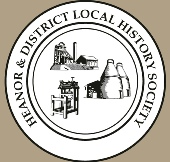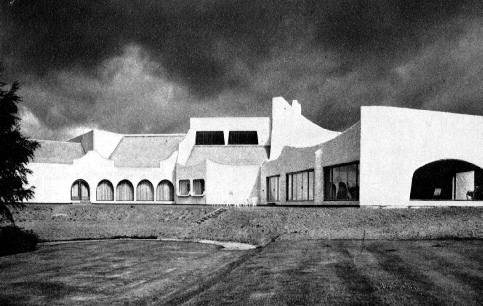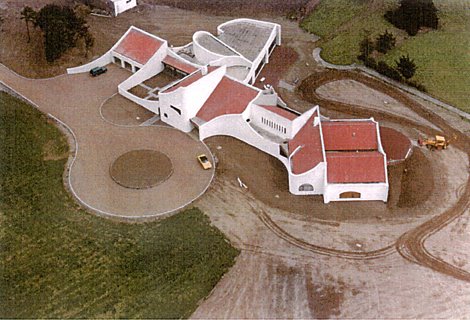
Heanor & District Local History Society
Stainsby House
Stainsby House is no more, though there is a modern building of that name (see below). Stainsby is actually in Horsley Woodhouse, rather than Smalley, but since the eventual occupiers of this mansion were major landowners in Smalley and were also the patrons of Smalley church (and Morley too), a page on its history firmly belongs within the village.

North side of Stainsby House, late 1800s.
The earliest period in the history of the house is unclear. An earlier building had been owned by the de Steynesby family, but the house pictured above dates from the early 1700s, at which time it was purchased by John Fletcher from the Moor family. The house had major works done to it around 1780, when it was owned by Elizabeth Barber, the daughter of John Fletcher.
The greatest period in the house's existence began in 1782, when the Barber family
sold it to Edward Sacheverell Wilmot Sitwell of Horsley, a descendent of the Sacheverell
family of Morley. (See Forgotten Place Names for an earlier reference to the Sacheverells.)
This family were to remain at Stainsby House, and at the forefront of Smalley life,
for the next 150 years. Edward Degge Wilmot-
Robert Wilmot-
Robert's son Edward Sacheverell Wilmot-

South side of the house, shortly before demolition.
During the Second World War, Stainsby House was acquired by a Roman Catholic boarding
school, St. Aloysius College, from Highgate, London, in order to accommodate their
staff and pupils who were evacuated from the capital. There is reference to their
distinctive maroon uniforms and inter-
The school continued for several years after the war, at least until the early 1950s, after which Stainsby House was taken over as a poultry farm. One local resident recalls that in the 1950s the occupiers lived in a flat within the building, leaving the rest of the house to become derelict (and overrun with chickens!). In 1964, complaints about the smell coming from the site were sufficient to bring in an inspection by the Medical Officer of Health.
In 1972 the house was finally demolished -

The 1974 futuristic Stainsby House.

And an aerial view.